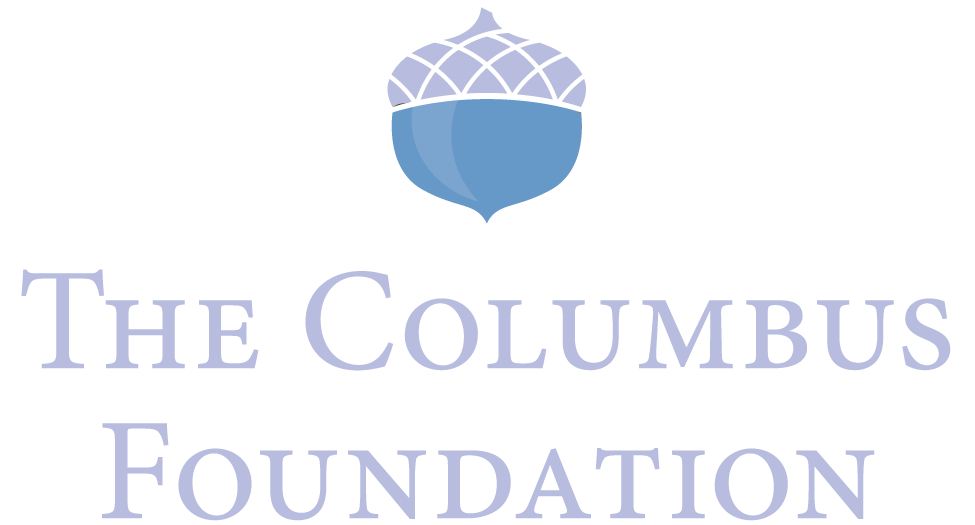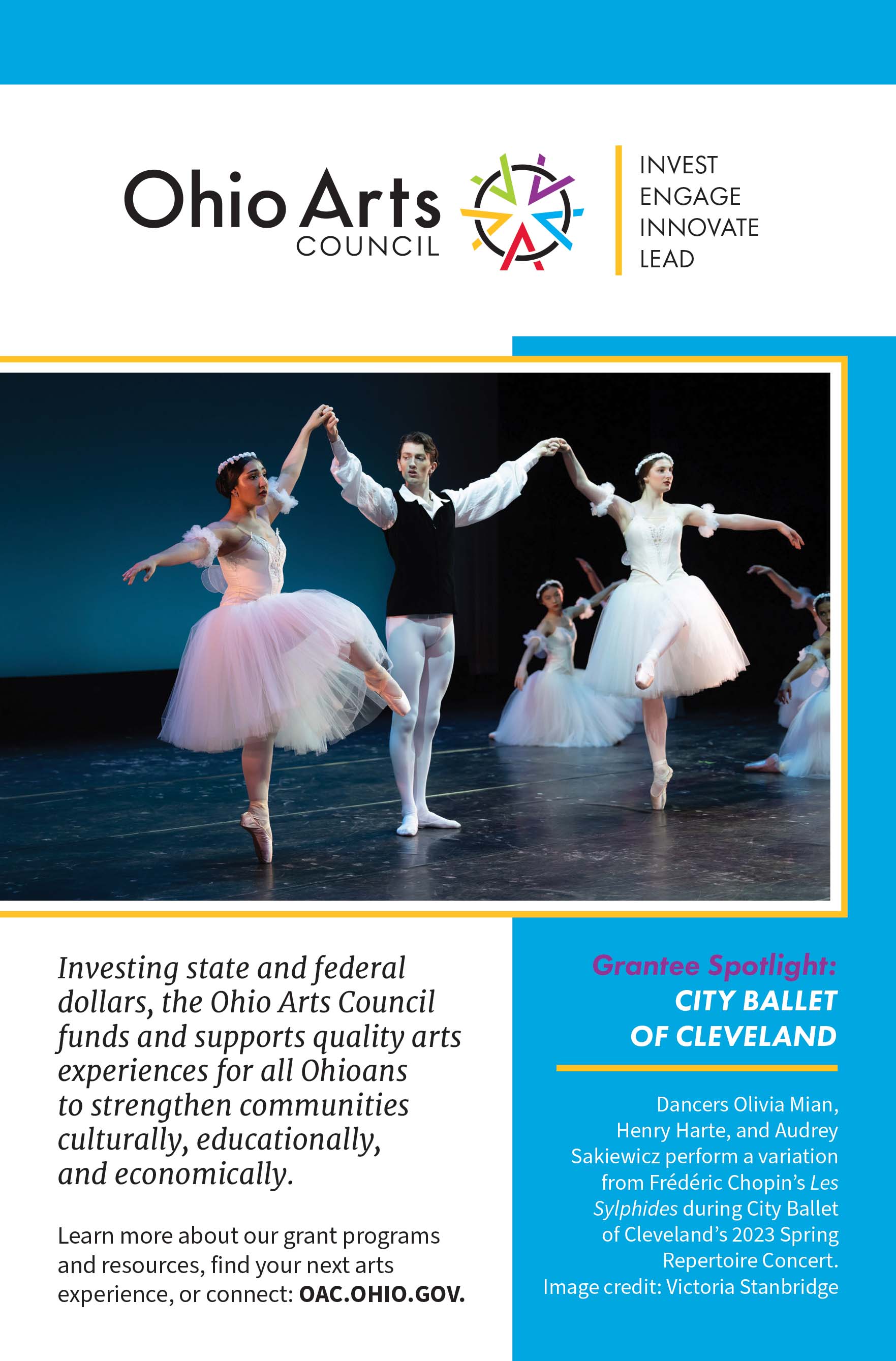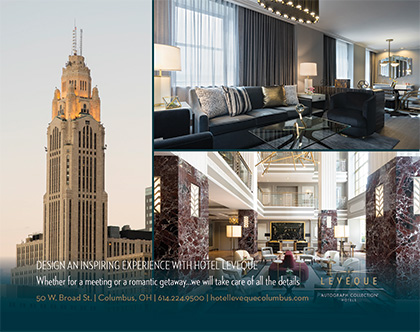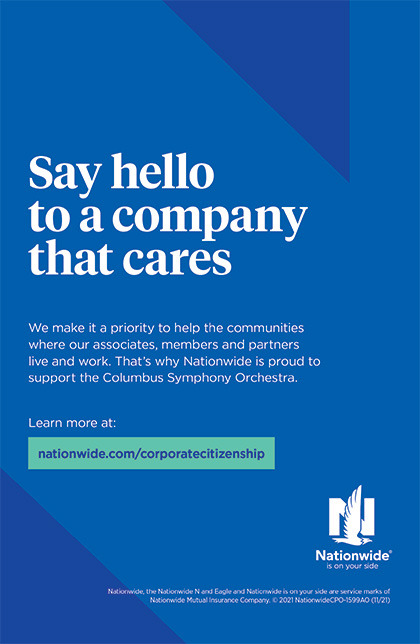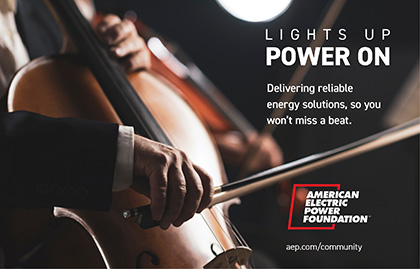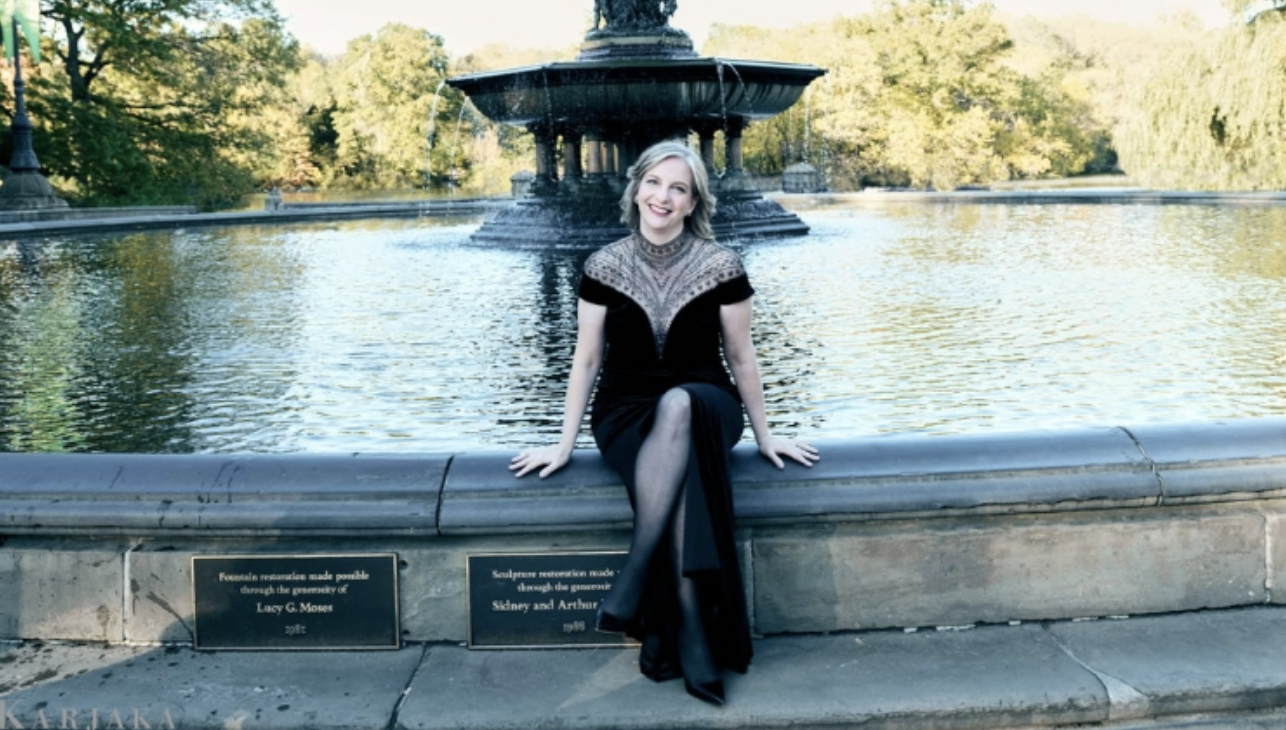

Friday, March 14, 2025, at 7:30PM
Saturday, March 15, 2025, at 7:30PM
Ohio Theatre
ALL MOZART
MASTERWORKS 8
Rossen Milanov, conductor
Orli Shaham, piano
• • • • • • • • • • • • • • • • • • • • • • • • • • • • • •
Mozart | Overture to Cosi fan tutte | |
Mozart | Concerto No. 20 in D Minor for Piano and Orchestra, K. 466 | |
--INTERMISSION-- | ||
Mozart | Symphony No. 38 (“Prague”) | |
Operating Support Generously Provided by


VIOLIN | BASS FLUTE |
Wolfgang Amadè Mozart
(Salzburg, 1756 – Vienna, 1791)
Overture to Così fan tutte, K. 588 (1790)
Così fan tutte was the third and last operatic collaboration between Mozart and Lorenzo da Ponte, following the wildly successful Marriage of Figaro and Don Giovanni. The title translates, roughly, as “All women are like that.” In the opera, two young men, in love with two sisters, test the constancy of their sweethearts by pretending to leave town, only to return in disguise and try to seduce each other’s girlfriends. It was a bet they placed with a cynical old philosopher who claims that all women are by nature unfaithful–and he almost wins the bet. If this sounds frivolous (and in fact, the storyline has come in for a lot of criticism in the last 200 years), the opera offers some deep psychological insights about men and women that were far ahead of their time. (The title might as well be Così fan tutti, a grammatical form encompassing both sexes!)
The overture to the opera is based on four fast-moving themes chasing one another in perpetual motion. At the beginning and at the end, we hear a characteristic slower motif, with a rest after every note. This is the music to which the motto “Così fan tutte” will be sung shortly before the finale of the opera.
Piano Concerto No. 20 in D minor,
K. 466 (1785)
Mozart’s concert series in Vienna in the mid-1780s, for which he wrote many of his greatest concertos, was one of the most successful ventures in his short life. It is no exaggeration to say that the piano concerto as we know it today owes its very existence to this undertaking of Mozart’s. The way Mozart followed the same basic outline in all his concertos while giving each work a completely individual character was entirely unprecedented. The external form (three movements in the order of fast-slow-fast) never changes in these works; the alternation of orchestral and solo sections is determined by more or less stable patterns. The second movements tend to be lyrical, and the finales spirited and lively. Nonetheless, the diversity behind this apparent uniformity is astonishing. No two concertos are alike in the details of elaboration, and Mozart’s endless melodic and harmonic imagination endows every single work with a personality of its own.
Concerto No. 20 is one of only two Mozart concertos, out of a total of 27, written in a minor key. (The other is No. 24 in C minor.) The minor mode had a special meaning for the masters of Viennese classicism, in whose works the choice of this “sad” mode usually went hand in hand with a heightened sense of drama and a whole set of specific harmonic, rhythmic, and textural devices that we normally don’t encounter in compositions written in the major. It is in such works that we may perceive the first signs of musical Romanticism before it became the dominant style of the early 1800s. The D-minor was the only Mozart concerto Beethoven ever performed (he even wrote down the cadenzas he played). It appealed to 19th-century ears more than did any other of the concertos; it reminded listeners of Mozart’s opera Don Giovanni, with which it shares its principal key and its dramatic intensity.
Like most of the piano concertos Mozart composed for his own use in his subscription series in Vienna (a total of 14 works), the D-minor was written in great haste and completed just a day before the performance. Mozart’s father Leopold, himself a composer and violinist, was visiting from Salzburg at the time, and wrote to his daughter Nannerl, a talented pianist and former child prodigy in her own right, after the concert:
…Then we had a new and very fine concerto by Wolfgang, where the copyist was still copying when we arrived, and the rondo of which your brother didn’t even have time to play through, as he had to supervise the copying.
The unique character of the concerto is apparent from the start. Whereas most Mozart concertos begin either with a powerful statement for full orchestra or a soft lyrical melody, the D-minor opens with more amorphous material: a syncopated rhythm on a single repeated note that evolves into a recognizable theme only gradually. The entrance of the solo piano, on a new theme filled with intense pain and longing, adds a new dimension to the emotional range of the movement. The tension is so strong that a coda of unusual length is required after the cadenza before the music can calm down.
The second-movement “Romanza,” in B-flat major, is lyrical and peaceful, or so it seems at the beginning. Its G-minor middle section, however, thrusts us right back into the stormy atmosphere of the first movement. The preparation for the return of the initial theme is particularly masterful and atmospheric.
The final Rondo returns once again to the impassioned mood of the first movement, but moves from there to a brighter, more cheerful section in D major, representing, in the words of one commentator, “a victory of serenity over the tumultuous anxiety of earlier moments.”
Symphony No. 38 in D major,
K. 504 (“Prague,” 1786)
Three years had passed since 1783, the year Mozart wrote his last symphony, the C-major work known as the “Linz.” Those years were among the most productive in the composer’s life; in addition to a magnificent series of piano concertos (no fewer than 12 works, including the D-minor masterwork we just heard), he composed six great string quartets, a host of other chamber music works and the opera The Marriage of Figaro. This list is impressive not only by the sheer quantity of works: Mozart, who had turned thirty in January 1786, had entered a new artistic phase, reaching an unprecedented level of maturity and sophistication. Having mastered the musical conventions of the age as a child and created his own personal style as a young adult, he was now beginning to write works that were totally unique in the way they treated that style and those conventions.
Every measure of the “Prague” Symphony bears witness to Mozart’s intention to transcend the scope of what a symphony had normally been in the past. (The same year, his friend Franz Joseph Haydn achieved a similar breakthrough–independently from Mozart–with his six “Paris” symphonies, Nos. 82-87). The main novelty is a much more complex web of motivic relationships, as a few short motifs and melodic gestures are sufficient to control much of what is happening. In addition, the technical demands placed on the performers have significantly increased–there are more virtuoso passages, intricate syncopations, and sensitive woodwind solo than ever before.
The “Prague” is one of only three Mozart symphonies to start with a slow introduction (the other two being the “Linz” and No. 39 in E-flat). The introduction here begins with a typical Mozartian gesture of repeated tonic notes played in unison with rapid scale figures leading up to them. (Similar openings may be found in the overture to Idomeneo and in the Jupiter Symphony, No. 41). But the introduction of the “Prague” soon diverges from all similar openings: the harmonies become more chromatic and the progression culminates in a great D-minor chord that sets off a new chain of astonishing modulations. The intense dramatic power of this introduction presages the overture to Don Giovanni, the new opera Mozart was soon to write for Prague.
The fast section of the first movement starts with a singular non-theme consisting of the single note D, repeated by the first violins in syncopation, while the other strings intone a simple motif of only a few bars. Two little “tags” are attached to this opening, one in the violins and one in the winds. In what follows, these elements are combined, transformed, and elaborated contrapuntally; surprisingly, the same material is used even when one would expect a new theme. The new theme, a mellifluous cantabile melody, arrives in due course, introduced by the strings alone and repeated in the minor mode with a countermelody in the bassoons. The exposition closes with material derived from earlier motifs, which also provide the basis for the splendid, and densely contrapuntal, development section. In the recapitulation, Mozart changes a single note (A-sharp instead of A-natural in the second violins), which proves to be enough to introduce a whole new series of harmonic intricacies.
The second movement is, like the first, in sonata form, with three distinct thematic areas. The first of these is a singing melody, the second is more turbulent, while the third breaks down to a string of short motifs, whose enchanting effect derives in part from the graceful interplay of the strings and woodwinds.
For unknown reasons, the “Prague” lacks a minuet and is, therefore, in only three movements instead of four. The finale is a dashing Presto, in which syncopations once again play an important role. The lively first melody is presented both in major and minor; after a lyrical second theme, the first returns in varied form; its rhythm serves as accompaniment for the lively closing section. After many exciting transformations, with abundant counterpoint and quite a bit of minor-mode drama, we are treated to a “false recapitulation.” That means that the main theme returns, only to veer off again, back to the development section. Since the main theme has already been used in this way, it is fitting that the real recapitulation is much abridged and limited to the second melody and the closing material.
Peter Laki
